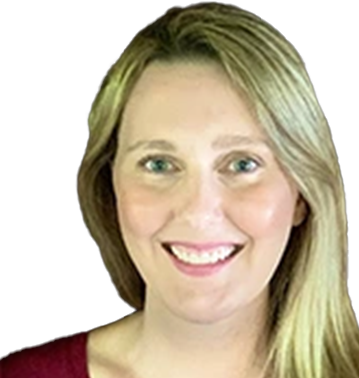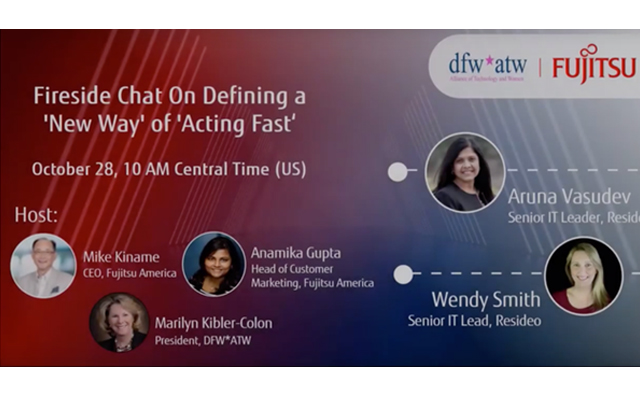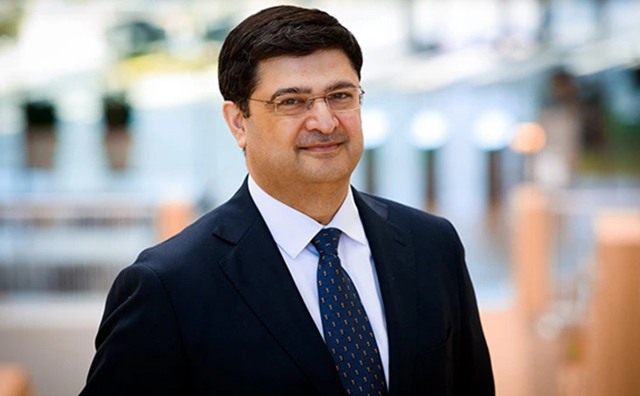Want to know more about how Fujitsu can help you achieve your sustainable transformation?
Clean break:
How Resideo decoupled core IT from parent Honeywell

When Honeywell’s smart-home unit was spun off as Resideo, it triggered a two-year challenge to separate the organizations’ IT and stand up a new environment — notwithstanding the arrival of the global pandemic.
* Update: Wendy Smith took on a new role in August 2021 as IT Director, Operational Excellence at international defense, security and aerospace company BAE Systems Inc; and in September 2021 Aruna Vasudev became Vice President, Business Systems at global human capital management software company Ceridian - by Jessica Twentyman
From the moment that US industrial giant Honeywell announced its spin-off of Resideo Technologies in October 2018, the clock was ticking for the IT team at the newly independent $5 billion provider of smart-home products and services.
Resideo — whose thermostats, humidifiers, air filters and security systems monitor and control the environment in more than 150 million homes — was going to have to carefully migrate key IT capabilities from Honeywell to a brand new set-up, while taking advantage of the rare opportunity to modernize and shape technology services to the new organization’s unique requirements. At the same time, IT leaders managing the project, such as Aruna Vasudev*, Senior Director of End-User Services, saw the spin-off as a chance to introduce new, agile ways of working that were more in tune with Resideo’s ambitions for rapid growth and responsiveness in a fast-evolving market.
 Aruna Vasudev, Senior Director of End-user Services, Resideo
Aruna Vasudev, Senior Director of End-user Services, Resideo
No. of months the Resideo team had to stand up IT for a company of 13,000 from scratch
Scope, scale, schedule
 Bruce Mathews, Resideo’s CIO
Bruce Mathews, Resideo’s CIO
The scope and scale of this project cannot be overstated, says Bruce Mathews, CIO of Austin, Texas-headquartered Resideo, which was born out of Honeywell’s Residential Products unit and its ADI Global Distribution business.
“What we’re talking about here is nothing less than standing up IT for a whole new company of 13,000 people in just 24 months — but only after extracting it from a situation where it was very commingled with an even bigger company,” he says. “It was a question of identifying who was using data and services across 600 different applications and 275 sites globally, and then figuring out how we could separate assets and bring to Resideo what was needed, without causing disruption to our business.”
“What we’re talking about here is nothing less than standing up IT for a whole new company of 13,000 people in just 24 months — but only after extracting it from a situation where it was very co-mingled with an even bigger company.”
The first step in figuring that out was the establishment of a robust ‘separation management’ office. “Even after we were separate companies, partnership and collaboration continued with Honeywell,” says Wendy Smith*, Senior IT Lead at Resideo.
“That was so important to ensure they knew what we would need from them during the separation, what our journey looked like and our mutual expectations. But it was also key in our own internal coordination, at a time when we were determined to create a new, world-class IT organization, one that had the freedom to embrace innovation, to do things differently.”
With that separation office in place, next came a slew of practical decisions, “and not a lot of time to make them,” says Vasudev. With Resideo adopting a hybrid-cloud environment, these included deciding which apps to take into the cloud and how to set up a new service desk for Resideo, supported by a new IT service management (ITSM) platform. It required Resideo to create its own data center and to rehost business applications, including major platforms such as SAP.
Each decision, she says, was made with three guiding principles in mind. “First, every service had to be resized and rescoped for the Resideo business model. What was good for Honeywell wasn’t necessarily good for Resideo. Second, was budget: we didn’t have an open check book. Everything had to be at the right price point. And third, we really wanted to take this opportunity to bring in the most contemporary technology available, to give us a platform for simplicity and innovation.”
 Wendy Smith, Senior IT Lead at Resideo
Wendy Smith, Senior IT Lead at Resideo
What that equated to, Vasudev adds, was “a ton of RFPs [requests for proposals], work on vendor and partner selection and on finding all the right price points. We were running in a frenzy, just trying to stand ourselves up as a fully formed IT capability.”
75
No. of applications migrated by the Resideo IT team to AWS cloud in under four months
Cloud shift
One of the earliest decisions made was opting to shift a good portion of the application portfolio to the cloud, with Amazon Web Services (AWS) as the primary landing point — a clear departure from Honeywell’s history of largely on-premise IT. The migration involved some 75 applications in total, including engineering apps and back-office apps for HR and finance — all shifted to AWS in three to four months, according to Vasudev. “It has worked well and been growing since then in terms of the elements we’re putting in the cloud. It set a direction of travel for us."

A deviation to that route, however, is the Resideo SAP system, used to run core manufacturing and supply chain processes. This was rehosted in a data center based in New York, however, SAP disaster recovery is fully architected on AWS.
In order to provide Resideo’s workforce with an IT helpdesk, the company chose Fujitsu, not just as the outsourced provider of IT services to employees, but also as its consulting partner on the implementation of an ITSM platform from ServiceNow. As planned, it was the first new service to go live (in August 2019) after a build-time of less than six months. “We knew that this had to be ‘step one’ because once ServiceNow was in place, all other apps and services could follow,” Vasudev explains.
In order to achieve a swift implementation, Resideo and Fujitsu stuck closely to an ‘out-of-the-box’ implementation, with minimal customization beyond what was required for compliance purposes in areas such as GDPR data governance. Having Fujitsu as both the service desk provider and implementation partner was another big help.
Finally, ServiceNow was implemented with a strong focus on self-service capabilities for employees. “That enabled not only a faster deployment but also enabled us to become operationally effective extremely fast, at a time when employees were dealing with a new IT environment,” Vasudev says. (Read more about how ServiceNow and Fujitsu helped Resideo cut its ITSM costs by 30%.)
COVID curveball
The strategy was all going to plan until early 2020, when the COVID-19 pandemic hit globally. This had serious repercussions on one of the final but critical elements of the separation: the roll-out of a new implementation of Microsoft Windows to the more than 10,000 devices used by its global workforce. “We spent weeks developing, involving staff in our customer-facing stores, our manufacturing plants, our traditional offices,” says Smith. “We’d set up major hubs for the roll-out of hardware and software in the US, the UK, Mexico, the Czech Republic and India — and then suddenly, all our perfect plans just didn’t fit the reality we were facing.”
But there could be no change to the project timeline nor the separation date that the Resideo IT team had to hit. After a major rethink, involving teams from health and safety and HR, many devices were shipped to users who were now working remotely and updated to the new Windows image over the VPN. Call centers were set up to provide users with pre- and post-deployment guidance so they could handle this themselves. Where factories were still up and running, in-person visits were made to perform ‘hot swaps’ on devices, so that continuity was assured.
“In many ways, it was an amazing learning experience,” says Vasudev. “I don’t think we will ever have another project experience like this again — not that we would want one!”
 Resideo: AirCycle indoor air quality program
Resideo: AirCycle indoor air quality program‘Pulling the ripcord’
Despite the headaches, by the time the late October cut-off date arrived the team gathered in a command center established to push the switchover over the finish line, says Mathews. This, after all their work, was the date on which access to Honeywell systems would be deactivated — for good. “There was a feeling of, ‘Let’s just get this done, let’s pull the ripcord,’” he says.
Underpinning any sense of trepidation, however, was a quiet confidence, says Vasudev. “We had talked and talked, planned and planned for every possible scenario. We felt pretty sure we’d covered all the bases — but there was still a fear of the unknown unknowns. So the point of the command center was to have a full team on hand if people had any issues and to tackle them fast.”
In the end, the switchover went smoothly. “It was nerve-wracking at times. It’s been such a huge amount of work, for us and for our partners,” says Vasudev. “The effort has been phenomenal, but so have the results — and we’ve managed to do all this with minimal disruption. So, yes, we’ve certainly been celebrating.”
But there has been little time for the jubilant Resideo IT team to relax; it is already moving on to the next stage of the technology roadmap. A big priority now is to push the self-service further, so that Resideo employees can solve even more of their IT problems, explains Vasudev. This will be achieved through the application of the predictive intelligence and bot-building capabilities within ServiceNow.
“The great job the team has done to bring this project home and get all of our people equipped for the challenge ahead is a powerful statement of what’s possible.”
Other items on the agenda include consolidating the various collaboration and ERP platforms used by the workforce. Network transformation is also a major area of focus going forward.
But if the IT effort has been huge, so has been the overall shift in mindset. The fresh start provided by the switchover will be a powerful reinforcement that Resideo is now fully in charge of its own destiny, says CIO Mathews.
“As leaders, we’re always trying to reinforce this idea that, as Resideo, we have to think differently. That’s harder than it seems because that attitude needs to be everywhere, not just at the top. It’s challenging for people to work in new ways but the great job the team has done to bring this project home and get all of our people equipped for the challenge ahead is a powerful statement of what’s possible and what our future, as Resideo, looks like,” he says.
* Update: Wendy Smith took on a new role in August 2021 as IT Director, Operational Excellence at international defense, security and aerospace company BAE Systems Inc; and in September 2021 Aruna Vasudev became Vice President, Business Systems at global human capital management software company Ceridian.

Watch Resideo’s Aruna Vasudev* and Wendy Smith* describe Resideo’s inspiring IT journey on a Fujitsu CxO Speaks webinar








